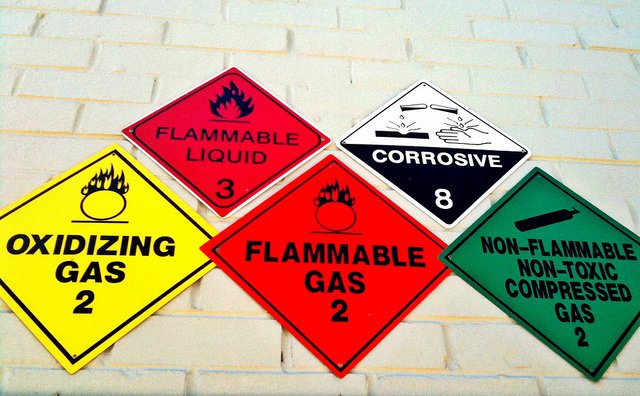The Occupational Safety and Health Administration’s (OSHA’s) Standard for Process Safety Management of Highly Hazardous Chemicals (usually referred to as “PSM”) requires extensive risk assessments and reduction efforts by facilities where a significant incident involving these chemicals might have catastrophic consequences. OSHA adopted PSM in 1992, and has made only minor technical revisions in the ensuing three decades. OSHA has also issued enforcement guidance to its inspectors, which it had not revised since 2012. However, in December 2023 OSHA issued an extensive new PSM enforcement policy, most of which is formatted in a total of 192 Questions and Responses designed to guide enforcement – and compliance that can obviate enforcement. The remainder of this note provides a very brief summary of the 120 page Enforcement Policy document.
Read MoreAudit, Compliance and Risk Blog
OSHA issues new Process Safety Management Standard enforcement guidance
Posted by Jon Elliott on Fri, Feb 09, 2024
Tags: Health & Safety, OSHA, Safety and Health at Work, workplace safety, chemical safety, PSM
On November 22, the Occupational Safety and Health Administration (OSHA) issued a Safety and Health information Bulletin (SHIB) discussing “safety helmets” as evolved alternatives to traditional hard hats, and offering recommendations for situations where employers should switch. On December 11 the agency announced that it’s following its own advice and replacing its own employees/inspectors hard hats with safety helmets. The rest of this note discusses OSHA provisions for personal protective equipment (PPE) providing head protection, and the rationale and examples of the benefits of upgraded headgear.
Read MoreTags: Health & Safety, OSHA, Safety and Health at Work, workplace safety
The Occupational Safety and Health Administration (OSHA) Region 3 (covering Delaware, Pennsylvania, West Virginia, and the District of Columbia) has renewed a Regional Emphasis Program under which it focuses inspection resources on “High Level Noise.” This announcement provides a useful reminder to employers throughout the US to evaluate occupational noise and the risks of employees’ hearing loss. The remainder of this note summarizes OSHA’s Occupational Noise Standard for General industry (separate requirements cover construction).
Read MoreTags: OSHA, workplace safety, PPE, PEL
OSHA reminds employers about duty to keep young workers safe
Posted by Jon Elliott on Tue, Dec 19, 2023
The Occupational Safety and Health Administration (OSHA) provides a “Young Workers - You have rights!” webpage on its website, compiling regulatory and practical information for employers and workers. As we approach the annual spike in youth employment during the end-of-year Holidays, this provides a timely reminder to focus on the needs and rights of young people in workplaces. The webpage targets information as follows:
- Young Workers
- Employers
- Parents and Educators
- Real Stories
- Hazards
- Resources
The remainder of this note summarizes these materials, focusing on information useful to employers.
Read MoreTags: Health & Safety, OSHA, Safety and Health at Work, workplace safety
WorkSafeBC reminds employer to prevent slips, trips and falls
Posted by Jon Elliott on Tue, Dec 05, 2023
On October 24, 2023, WorkSafeBC, British Columbia’s provincial occupational health and safety (OHS) regulator and workers’ compensation overseer, issued a reminder to employers to address the hazards of workplace slips, trips and falls. The reminder began with a recitation that approximately 20 percent of all workplace injuries in the province relate to slips, trips, and falls. The agency also reported that “in the past six years, almost 41,000 workers in B.C. suffered slip-trip-and-fall injuries, including fractures, sprains, and dislocations.” The agency notice follows these statistics with reminders of what employers can and should do to reduce the likelihood and severity of these injuries. The remainder of this note summarizes this information.`
Read MoreTags: Health & Safety, Safety and Health at Work, workplace safety, Injury, OHS
Deadlocked Supreme Court of Canada allows restriction of owner-employer contracting out OHS responsibilities to contractors
Posted by Jon Elliott on Thu, Nov 30, 2023
Throughout North America, Canadian occupational health and safety (OHS) agencies and US occupational safety and health (OSH) agencies administer and enforce worker protection laws. These laws require extensive employer efforts to protect employees – although in some situations it’s unclear which employer(s) are responsible for which workers. These complex situations include construction sites where one or more landowners or property occupiers hire one or more contractors to performer work. In November 2023 the Supreme Court of Canada deadlocked four-to-three-to-one in a case involving liability for a municipal “owner” that had attempted to contract all responsibilities (and potential liabilities) to the contractor (“constructor”) hired to repair a municipal water main, after a worksite death. (R. v. Greater Sudbury (City)) Because the Supreme Court deadlocked, the Ontario Court of Appeal decision finding the city liable becomes the law of the case, overturning many years of practice in which owners contracted-out OHS responsibilities to their constructors.
Read MoreTags: OSHA, Supreme Court, workplace safety, Canada, Ontario Court, Ontario
The Occupational Safety and Health Administration (OSHA) is authorized to inspect regulated workplaces, although it generally limits its inspections to workplaces deemed highly hazardous (often targeted sector-wide through National Emphasis Programs (NEPs) or their regional or state equivalents), or in response to complaints or reported incidents of injury or illness (I&I). OSHA regulations include inspection procedures (29 CFR 1903), which OSHA proposed on August 30, 2023 to clarify and revise slightly. The rest of this note summarizes OSHA’s procedures briefly, including the proposed changes.
Read MoreTags: Employer Best Practices, OSHA, Employee Rights, Employment, workplace safety
Mexico adopts workplace safety rules covering teleworkers
Posted by Jon Elliott on Wed, Aug 09, 2023
On June 8, Mexico’s Ministry of Labor and Social Welfare (Secretaría del Trabajo y Previsión Social (STPS)) published Official Mexican Standard (Norma Oficial Mexicana (NOM)) NOM-037-STPS-2023 Telework-Safety and Health Conditions at Work (“NOM-037” or "Standard"), which will take effect on December 5. The new Standard will require employers to take specific measures to protect workers who spend at least 40% of their worktime operating in what the Standard calls the “teleworking modality.” The remainder of this note summarizes these new requirements.
Read MoreTags: workplace safety, STPS, Mexico
OSHA revises Injury and Illness reporting requirements for some large employers
Posted by Jon Elliott on Tue, Aug 01, 2023
The Occupational Safety and Health Administration (OSHA) requires most employers with 10 or more employees at an “establishment” to prepare and maintain records of occupational injuries and illnesses (I&I) as they occur (I&I Logs). OSHA also requires employers to post an annual I&I Summary in each workplace “establishment” by February 1, summarizing that workplace’s I&Is during the previous calendar year. In addition, OSHA requires some employers to submit some of this I&I information electronically to the agency. (I wrote about the initial electronic reporting requirements HERE). On July 21 OSHA updated and revised these electronic reporting requirements (finalizing a proposal I wrote about HERE). The remainder of this note summarizes these changes.
Read MoreTags: OSHA, Protecting employees, workplace safety, Injury, Illness
Canada ratifies international workplace violence prevention treaty and prepares to meet requirements
Posted by Jon Elliott on Fri, Jul 07, 2023
Canada has ratified International Labour Organization (ILO) Convention 190, the “Violence and Harassment Convention, 2019” (also referred to as C190). Ratification was made on January 30, 2023, to become effective January 30, 2024. Canada will consider ILO’s “Recommendation 206,” which provides guidelines on how to apply C190, accounting for complementary roles by governments, workers and employers, and their respective organizations. Readers should note that Canada was intimately involved in the development of C190, proving the chair of the ILO Standard-Setting Committee on Violence and Harassment in the World of Work at the 2018 and the 2019 International Labour Conference.
Read MoreTags: Workplace violence, workplace safety, Canada, ILO, C190










